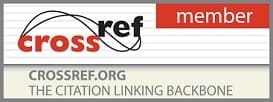International Journal of Homoeopathic Sciences
2022, Vol. 6 Issue 3, Part C
Role of individualised homoeopathic approach in management of attention deficit hyperactivity disorder: A prospective observational study
Author(s): Dr. Ankit Dubey and Dr. Bainu Sharma
Abstract:
ADHD is estimated to affect about 6-7% of people aged 18 and under, but such statistics are widely believed to be underestimated, due to poor diagnosis and low reporting rates. If ignored, untreated children of ADHD can have problems into adulthood .The stimulating (eg. Amphetamines, Dexedrine etc.) & the non-stimulating (eg. Strattera), medications which the modern medicine offers for treating ADHD, leaves behind deleterious effects as a result of which the parents are opting for Complementary & alternative medical (CAM) therapies for such childhood problems. Homoeopathy plays a vital role in managing such childhood disorders.
Aims and Objective: To study the usefulness of homoeopathic medicines in managing Attention Deficit -Hyperactivity Disorder in Children (5-12 yrs of Age) based on homoeopathic principles of Individualization.
Methodology: 30 patients were selected from various geographical locations, where patients were already diagnosed by a Psychiatrist. Detailed history about the child was received, which started from the day of conception, along with mother’s history during antenatal period, child’s behaviour in infancy and in childhood duration, developmental milestones, past history, family history, and objective signs were noted down by the parents and by me. To determine the outcome of the treatment, regular follow ups were taken and the status of each patient was canalized with the help of symptom intensity score (based on CGI-P). Centesimal scale potencies were administered to the cases according to the symptoms & susceptibility of the patient.
Results: 0ut of 30 patients of ADHD, 26 patients were male (86.66%) and 4 patients were female (13.34%). Maximum no. of patients out of those 30 cases were found between age group of 7 to 8 years of age i.e 8 patients (26.6%). In cases of 30 patients of ADHD most commonly used potency was 1M i.e. in 18 cases (50%).In cases of 30 patients of ADHD, after giving homoeopathic treatment maximum no. of patients i.e. 21(70%) were improving, 3 patients had significant improvement (10%),3 patients (10%) were Status quo, and 3patients (10%) patients had left treatment.
Conclusion: Auxiliary therapies play a major role in neurobehavioural disorders& from my study I conclude that Homoeopathy can make the process of healing faster when it is combined with auxiliary therapies. The 30 cases on which I have worked were already on auxiliary therapy for considerable period of time and after introduction of Homoeopathic medication the process of improvement was evidently faster.
Pages: 142-148 | 932 Views 517 Downloads

How to cite this article:
Dr. Ankit Dubey, Dr. Bainu Sharma. Role of individualised homoeopathic approach in management of attention deficit hyperactivity disorder: A prospective observational study. Int J Hom Sci 2022;6(3):142-148. DOI: 10.33545/26164485.2022.v6.i3c.610







